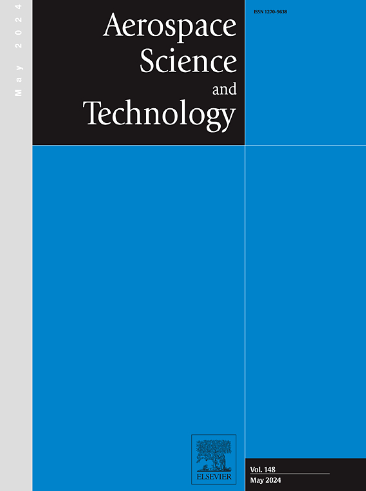Nonlinear vibration characteristics and damage detection method of blade with breathing fatigue crack
IF 5
1区 工程技术
Q1 ENGINEERING, AEROSPACE
引用次数: 0
Abstract
In aero-engine, blades operate under harsh conditions for extended periods, which makes them highly susceptible to fatigue cracks. The localized and nonlinear structural changes caused by blade crack lead to complex vibration characteristics that are not well understood, posing challenges to the identification of these cracks. This paper proposes an approach for identifying breathing fatigue crack in compressor blade, leveraging the nonlinear features induced by the cracks. Crucial sensitive characteristics are extracted and a crack indicator for accurate crack detection is defined. Initially addressing the typical morphology of fatigue breathing cracks, a dynamic model of blade with cracks is developed to analyze their impact on the natural frequencies. Nonlinear contact forces are introduced to characterize the "breathing" effect of the fatigue crack, allowing for the determination of the harmonic distribution patterns in the blade's vibration response under various excitation conditions. A finite element model is then established considering the crack morphology, by adopting the contact element. Based on that, the nonlinear response characteristics associated with the blade's primary, sub-harmonic, and super-harmonic resonances are explored. A crack-sensitive parameter is defined and extracted from the nonlinear responses, under different crack propagation stages. At last, effectiveness and reliability of the defined parameter for identifying cracks is validated through a vibration fatigue test.
带呼吸疲劳裂纹叶片的非线性振动特性和损伤检测方法
在航空发动机中,叶片长期在恶劣条件下运行,极易出现疲劳裂纹。叶片裂纹引起的局部非线性结构变化导致了复杂的振动特性,而人们对这些特性的理解还不够深入,这给识别这些裂纹带来了挑战。本文提出了一种利用裂纹引起的非线性特征识别压缩机叶片呼吸疲劳裂纹的方法。本文提取了关键的敏感特征,并定义了用于准确检测裂纹的裂纹指标。首先针对疲劳呼吸裂纹的典型形态,开发了带有裂纹的叶片动态模型,以分析其对固有频率的影响。引入非线性接触力来描述疲劳裂纹的 "呼吸 "效应,从而确定各种激励条件下叶片振动响应的谐波分布模式。然后,通过采用接触元素,建立了一个考虑到裂纹形态的有限元模型。在此基础上,探讨了与叶片的主谐波、次谐波和超谐波共振相关的非线性响应特性。从不同裂纹扩展阶段的非线性响应中定义并提取了裂纹敏感参数。最后,通过振动疲劳试验验证了所定义参数在识别裂纹方面的有效性和可靠性。
本文章由计算机程序翻译,如有差异,请以英文原文为准。
求助全文
约1分钟内获得全文
求助全文
来源期刊

Aerospace Science and Technology
工程技术-工程:宇航
CiteScore
10.30
自引率
28.60%
发文量
654
审稿时长
54 days
期刊介绍:
Aerospace Science and Technology publishes articles of outstanding scientific quality. Each article is reviewed by two referees. The journal welcomes papers from a wide range of countries. This journal publishes original papers, review articles and short communications related to all fields of aerospace research, fundamental and applied, potential applications of which are clearly related to:
• The design and the manufacture of aircraft, helicopters, missiles, launchers and satellites
• The control of their environment
• The study of various systems they are involved in, as supports or as targets.
Authors are invited to submit papers on new advances in the following topics to aerospace applications:
• Fluid dynamics
• Energetics and propulsion
• Materials and structures
• Flight mechanics
• Navigation, guidance and control
• Acoustics
• Optics
• Electromagnetism and radar
• Signal and image processing
• Information processing
• Data fusion
• Decision aid
• Human behaviour
• Robotics and intelligent systems
• Complex system engineering.
Etc.
 求助内容:
求助内容: 应助结果提醒方式:
应助结果提醒方式:


